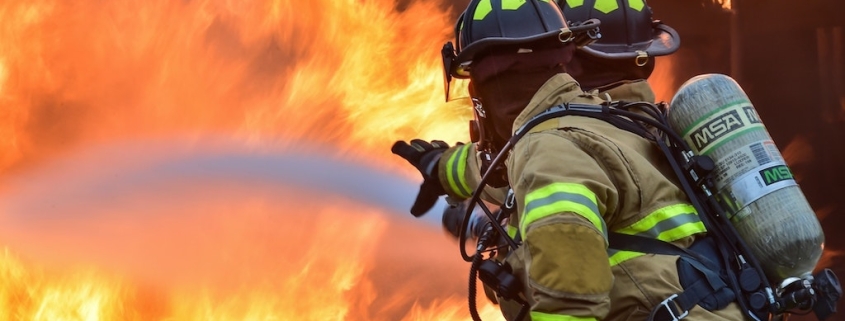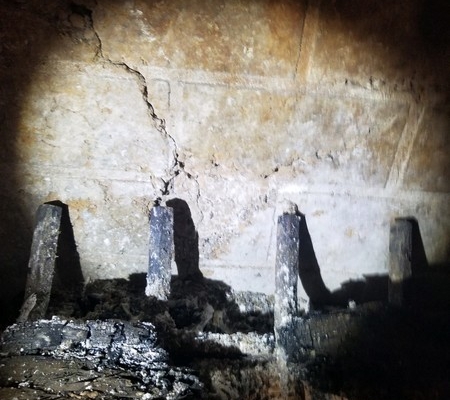Imagine coming home on a chilly evening, greeted by the warm glow and comforting crackle of a fireplace. Fireplaces not only add warmth but also a timeless charm to any living space. Among the various types available, gas fireplaces stand out for their convenience, efficiency, and aesthetic appeal. Whether you’re looking to enhance your home’s ambiance or reduce maintenance, gas fireplaces offer a modern solution that combines functionality with elegance.
While traditional wood-burning fireplaces evoke nostalgia and warmth, they often come with significant upkeep and cleaning requirements. The chore of preparing and cleaning up after a wood fire can deter many homeowners from enjoying their fireplace regularly. Gas fireplaces alleviate these concerns by offering low-maintenance heating solutions that require minimal cleaning and upkeep. Unlike wood-burning fireplaces that produce ash and require regular chimney cleaning, gas fireplaces provide convenience with the simple flick of a switch or remote control operation.
In the following sections, we’ll explore in detail the diverse advantages of gas fireplaces, ranging from their ease of installation and design flexibility to their environmental friendliness and year-round usability. Whether you’re considering a retrofit or planning for a new installation, understanding the benefits of gas fireplaces will empower you to make an informed decision that enhances your home’s warmth and charm.
Understanding Gas Fireplaces
Gas fireplaces represent a modern and efficient alternative to traditional wood-burning fireplaces. They offer convenience, cleanliness, and aesthetic appeal without the drawbacks associated with wood fires. Here’s a closer look at what gas fireplaces entail:
What are Gas Fireplaces?
Gas fireplaces utilize natural gas or propane to produce flames that simulate the appearance of a wood-burning fire. They are designed to provide both warmth and ambiance to a room, offering a controlled and consistent heat source.
Types of Gas Fireplaces
-
Vented Gas Fireplaces: These models use a chimney or venting system to expel combustion gases outside the home. They offer a realistic flame appearance and are suitable for retrofitting into existing wood-burning fireplace openings.
-
Vent-Free (Ventless) Gas Fireplaces:Vent-free models operate without a chimney or external venting. They use a catalytic converter to clean and recirculate indoor air, making them highly efficient in terms of heat output. However, they require careful consideration of indoor air quality and ventilation.
-
Gas Fireplace Inserts:These are units designed to fit into existing fireplaces, converting them into efficient gas-burning alternatives. They offer flexibility in design and heat output while enhancing the energy efficiency of older fireplace setups.
How Gas Fireplaces Work
Gas fireplaces operate by burning either natural gas or propane. A pilot light or electronic ignition ignites the gas, which then burns cleanly and efficiently. The heat generated can be adjusted using controls on the fireplace or remote, providing instant warmth without the need for wood chopping, ash cleanup, or chimney maintenance associated with traditional fireplaces.
Understanding these basics of gas fireplaces sets the stage for exploring their numerous advantages, which we’ll delve into further in the following sections.
Convenience and Ease of Use
Gas fireplaces are celebrated for their user-friendly features and effortless operation, making them a preferred choice for many homeowners seeking both comfort and convenience.
Instant Heat at Your Fingertips
One of the standout advantages of gas fireplaces is their ability to provide instant heat with just the touch of a button. Unlike wood-burning fireplaces that require preparation and waiting for the fire to build, gas fireplaces deliver immediate warmth. This feature is particularly appealing during chilly evenings or when quick heat is needed.
Remote Control Options
Many modern gas fireplaces come equipped with remote control capabilities. This allows users to adjust the flame height, heat output, and even turn the fireplace on or off from a distance. Remote controls enhance convenience by eliminating the need to manually operate the fireplace, providing ultimate control at your fingertips.
Operational Simplicity
Gas fireplaces are designed for simplicity. Once installed and connected to a gas line, operating them is straightforward. Users can start and stop the fire easily, adjust heat levels, and control other settings effortlessly. This simplicity not only enhances usability but also reduces the time and effort traditionally associated with maintaining and using a fireplace.
These features make gas fireplaces a practical and convenient choice for heating and enhancing the ambiance of any home, offering unparalleled ease of use compared to traditional wood-burning alternatives.
Low Maintenance and Cleanliness
Gas fireplaces are renowned for their minimal maintenance requirements and cleanliness, offering a hassle-free heating solution for homeowners.
Minimal Cleaning Requirements
Unlike wood-burning fireplaces that produce ash and soot, gas fireplaces generate minimal debris. They do not require regular cleaning of ash or the removal of soot buildup from the chimney. This reduces the time and effort needed to maintain the fireplace, making it a convenient option for busy households.
No Ash or Soot Cleanup
One of the primary advantages of gas fireplaces is the absence of ash and soot. With gas fuel, there’s no residue left behind after use, eliminating the need for cleaning up after every fire. This not only saves time but also keeps the fireplace and surrounding area cleaner and free from airborne particles associated with wood burning.
Gas Fireplace Safety Features
Gas fireplaces come equipped with advanced safety features to ensure safe operation. These may include automatic shut-off mechanisms, flame sensors, and temperature controls. Such features not only enhance safety but also provide peace of mind to homeowners, knowing that their fireplace is designed to operate securely.
Energy Efficiency
Gas fireplaces are recognized for their energy-efficient performance, offering several benefits that contribute to cost savings and environmental conservation.
Cost Savings on Heating Bills
Compared to traditional wood-burning fireplaces, gas fireplaces are more efficient in converting fuel into heat. This efficiency translates into lower heating bills, as less energy is wasted during combustion. Over time, these savings can significantly reduce household heating expenses.
Zone Heating Benefits
Gas fireplaces allow for zone heating, where specific areas or zones within a home can be heated independently. By heating only the rooms in use, homeowners can optimize energy use and further reduce heating costs. This targeted heating approach is especially beneficial in larger homes or during transitional seasons when full-house heating may not be necessary.
Environmental Impact
Choosing a gas fireplace contributes to a reduced environmental footprint compared to wood-burning alternatives. Gas burns cleaner than wood, emitting fewer particulates and pollutants into the atmosphere. This helps improve air quality and supports environmental sustainability efforts.
By prioritizing low maintenance, cleanliness, energy efficiency, and environmental responsibility, gas fireplaces offer a practical and sustainable heating solution for modern homes.
Cost-Effectiveness as a Heating Solution
Gas fireplaces stand out as a cost-effective heating solution, offering significant advantages over electric and wood-burning alternatives.
Comparing Gas vs. Electric and Wood Fireplaces
When considering heating efficiency and cost, gas fireplaces often outperform both electric and wood-burning fireplaces. Gas provides immediate heat with higher efficiency ratings, translating to lower energy bills compared to electric models. Additionally, gas is typically more cost-effective than wood, as it eliminates the ongoing expense of purchasing firewood.
Long-Term Financial Benefits
Investing in a gas fireplace yields long-term financial benefits. The lower operational costs and reduced maintenance requirements contribute to ongoing savings. Over time, these savings can offset the initial installation costs, making gas fireplaces a wise financial investment for homeowners.
Return on Investment
Gas fireplaces enhance the resale value of homes. Potential buyers appreciate the convenience, efficiency, and aesthetic appeal of gas fireplaces, which can positively influence property value. Homeowners can expect a favorable return on their investment when selling a home with a well-maintained gas fireplace.
Safety and Security
Gas fireplaces prioritize safety and security with advanced features designed to protect both occupants and property.
Built-In Safety Features
Modern gas fireplaces are equipped with built-in safety features such as automatic shut-off valves, flame monitoring sensors, and temperature controls. These mechanisms ensure safe operation and minimize the risk of accidents.
Ventilation and Air Quality Considerations
Proper ventilation is crucial for gas fireplace installations to maintain indoor air quality. Vent-free models require adequate airflow to disperse combustion by-products safely. Ventilated gas fireplaces use chimneys or direct vents to exhaust gases outside, preventing indoor air pollution.
Child and Pet Safety
Gas fireplaces are designed with safety in mind, including barriers and screens to prevent accidental contact with hot surfaces. Childproof and pet-proof features ensure a secure environment without compromising on comfort or aesthetics.
Design Flexibility
Gas fireplaces offer unparalleled design flexibility, allowing homeowners to customize their heating solutions to match personal preferences and home decor.
Versatile Installation Options
Gas fireplaces can be installed in various locations throughout the home, including living rooms, bedrooms, and even outdoor spaces. This versatility allows homeowners to optimize space utilization while enjoying the warmth and ambiance of a fireplace.
Stylish Design Choices
From traditional to contemporary styles, gas fireplaces come in a wide range of designs to complement any interior theme. Options include mantle-mounted units, built-in inserts, and freestanding models, each offering unique aesthetic appeal and functionality.
Customization Possibilities
Homeowners can personalize their gas fireplaces with custom finishes, materials, and accessories. Customization options extend to flame settings, heat output levels, and remote control features, ensuring a tailored fireplace experience that meets individual needs and preferences.
Gas fireplaces combine cost-effectiveness, safety, and design flexibility, making them a preferred choice for heating and enhancing the ambiance of modern homes.
Environmental Friendliness
Gas fireplaces offer environmental benefits compared to traditional wood-burning alternatives, promoting sustainable heating practices and reducing carbon footprints.
Lower Carbon Footprint
Gas fireplaces produce fewer emissions than wood-burning fireplaces, contributing to lower carbon footprints and improved air quality indoors and outdoors. This makes them a more environmentally friendly choice for heating homes.
Natural Gas vs. Wood Burning
Using natural gas in fireplaces results in cleaner combustion and fewer particulate emissions compared to burning wood. This reduces environmental impact and supports sustainable heating practices.
Sustainable Heating Practices
Gas fireplaces promote sustainable heating practices by utilizing cleaner fuel sources and minimizing waste. They help conserve natural resources while providing efficient warmth and comfort.
Commercial Applications
Gas fireplaces are increasingly used in commercial settings, offering unique benefits for businesses in various industries.
Gas Fireplaces in Commercial Settings
Commercial establishments, such as hotels, restaurants, and offices, benefit from the ambiance and practicality of gas fireplaces. They enhance customer experience and satisfaction by creating inviting atmospheres.
Benefits for Businesses and Hospitality
Gas fireplaces contribute to a welcoming environment that encourages guests to linger and enjoy their surroundings. They add aesthetic appeal and functional warmth, enhancing the overall ambiance of commercial spaces.
Customer Experience and Satisfaction
In hospitality settings, gas fireplaces elevate customer experience by providing a cozy atmosphere that enhances comfort and relaxation. This positive experience can lead to increased customer satisfaction and loyalty.
Finding the Right Gas Fireplace
Choosing the right gas fireplace involves considering various factors to ensure it meets your heating needs and complements your home’s design.
Where to Buy Gas Fireplaces
Explore reputable retailers and manufacturers specializing in gas fireplaces. Look for authorized dealers who offer quality products and reliable customer service.
Choosing the Right Model for Your Needs
Evaluate different gas fireplace models based on heating capacity, efficiency ratings, design options, and features such as remote control operation and safety enhancements.
Installation Tips and Considerations
Consult with professionals for proper installation of your gas fireplace. Consider factors like ventilation requirements, clearance distances, and compliance with local building codes for safe and efficient operation.
Gas fireplaces offer environmental benefits, are ideal for commercial applications, and provide customizable options to suit residential heating needs. Choosing the right gas fireplace ensures efficient heating, aesthetic enhancement, and overall satisfaction in both residential and commercial settings.
Becoming a Gas Fireplace Dealer
Interested in becoming a gas fireplace dealer? Here’s what you need to know:
Requirements and Benefits
Becoming a dealer typically requires partnering with a reputable manufacturer or distributor. Benefits include access to a wide range of products, dealer discounts, and potential for sales growth in the home heating market.
Market Opportunities
The market for gas fireplaces continues to expand as more homeowners and businesses seek efficient heating solutions. Dealers can capitalize on this demand by offering high-quality products and excellent customer service.
Training and Support
Manufacturers often provide comprehensive training programs for dealers. This includes product knowledge, installation techniques, and troubleshooting skills. Ongoing support ensures dealers can confidently meet customer needs.
Industries Using Gas Fireplaces
Gas fireplaces are utilized across various industries:
Residential Applications
In homes, gas fireplaces provide efficient heating, aesthetic appeal, and convenience. They are popular additions to living rooms, bedrooms, and outdoor spaces, enhancing comfort and ambiance.
Commercial and Hospitality Sectors
Hotels, restaurants, and offices utilize gas fireplaces to create inviting environments for guests and employees. They contribute to a cozy atmosphere that enhances customer experience and satisfaction.
Institutional Use
Schools, hospitals, and other institutions benefit from the warmth and aesthetic value of gas fireplaces. They improve indoor air quality and offer reliable heating solutions in large, open spaces.
Resources for Gas Fireplace Owners
For current gas fireplace owners, here are essential resources to maintain and optimize your investment:
Maintenance Tips
Regular maintenance ensures optimal performance and longevity of your gas fireplace. Tips include cleaning glass doors, inspecting vents, and scheduling professional inspections annually.
Troubleshooting Guide
Common issues such as pilot light problems or unusual odors can be resolved with troubleshooting guides provided by manufacturers. These resources help identify and address issues promptly.
Professional Services and Support
For complex issues or installations, rely on certified professionals. They offer expert services such as installation, repairs, and upgrades to ensure your gas fireplace operates safely and efficiently.
By understanding these aspects of becoming a dealer, the industries benefiting from gas fireplaces, and resources available to owners, you can maximize the benefits of gas fireplaces in residential, commercial, and institutional settings.
Conclusion
In conclusion, gas fireplaces offer a multitude of advantages that make them a superior choice for heating and ambiance in both residential and commercial settings. From convenience and ease of use to energy efficiency and design flexibility, gas fireplaces cater to diverse needs and preferences. They provide instant heat at the touch of a button, require minimal maintenance with no ash or soot cleanup, and incorporate advanced safety features for peace of mind.
Moreover, gas fireplaces are cost-effective compared to electric and wood-burning alternatives, offering long-term savings on heating bills and a positive return on investment. They also contribute to environmental sustainability by reducing carbon footprints and promoting sustainable heating practices.
By choosing the right gas fireplace model, understanding installation tips, and accessing professional services and resources, owners can ensure their gas fireplaces remain efficient and reliable for years to come. Embracing the benefits of gas fireplaces not only enhances living and working environments but also supports eco-friendly heating solutions in today’s modern spaces.











